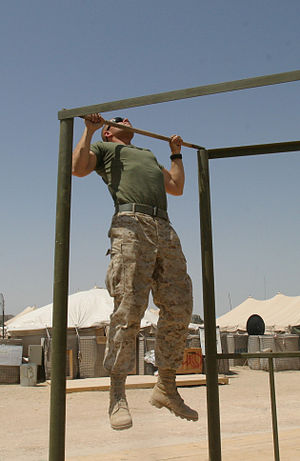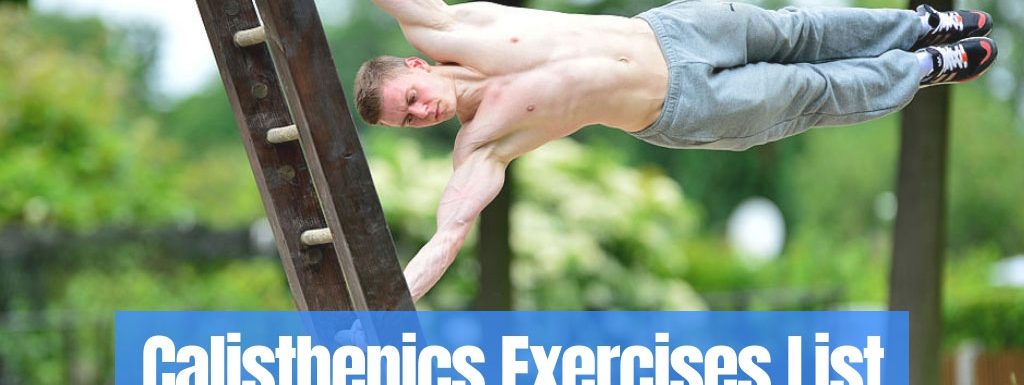Calisthenics increase your body strength, muscular conditioning and flexibility as you swing, run, jump, bend, and push yourself to the limit. Your own body and a proper outfit are the only equipment you’ll need. Calisthenics aka ‘Street Workout’ require little effort for maximum results. We have compiled a list of calisthenics exercises that will bring much gain with little to no pain (unless you skip the warm-up).
Warm Up
Warming up involves raising your heart rate to the optimal level for the following exercises. You can choose between the below options, based on their effect.
Heart Rate Optimization
- 30 alternating lunges + 10 burpees + 20 squats;
- 4-5 minutes of fast skipping using a speed rope;
- Ten reps of 165-feet sprints + 10 seconds of rest in between;
- 30 mountain climbers + 30 jumping jacks.
Joint Mobilization
Spend at least five minutes on all mobilization exercises. Each exercise should take around one minute.
- Shoulder: Arm circles, chest openers, shoulder dislocations;
- Back: Back extensions, bridges, cat stretches;
- Hips: Leg swings, deep walking lunges.
Push-Ups

Classical push-ups work your entire body. Keep your hands and legs on the ground and the body in plank position. Bend your elbows, while lowering your body down.
Keep your elbows tucked into sides, and make sure your butt is lower than your initial position. Begin to rise when your body is an inch above the ground.
You can try the variations if the typical push-up seems difficult. Find the exercise you are most comfortable with by trying out push-ups on knees, archer push-ups, plank holds, plank push-ups, or one-hand push-ups.
Pull-Ups
 Pull-ups require a bar for your body to hang on, using an overhand grip. Lift your body against the bar, based on the muscles of your arms.Pull your chest up toward the bar, using a full range motion. Lift your body until your chin is a few inches higher than the bar.
Pull-ups require a bar for your body to hang on, using an overhand grip. Lift your body against the bar, based on the muscles of your arms.Pull your chest up toward the bar, using a full range motion. Lift your body until your chin is a few inches higher than the bar.
The traditional pull-up exercise may be too demanding for a newbie. Variations include negative chin-ups and Australian pull-ups. Chin-ups involve turning your palms toward you to engage the biceps and back muscles.
A common mistake when doing pull-ups is jerking your head over the bar or using your legs to help yourself lift your body. Be aware of the momentum and avoid it to keep your body in shape and maybe lose weight.
Image source: Deposit Photos
Dips

Dips work your chest muscles and area. Perform the dips by gripping a pair of parallel bars with your hands. Use them to suspend your body in the air. Slowly bend your elbows to lower yourself toward the ground until your hands make a 90-degree angle. Continue by pushing yourself back up.
Dips are strength exercises that work your chest and upper body muscles. Although unsuitable for women, dips can be performed by bodybuilding professionals. Easy variations include leaning forward to target the chest, instead of triceps. Add light weights to increase the difficulty of the exercise.
Squats
- Pistol squats improve core strength and body balance. This type of exercises works your body using one foot. Start from an upright position, holding the pull-up bar or squat rack. Lift your body then lower it by using a handhold for assistance. Assistance protects you from those seconds when you have trouble lifting back up and continuing the set. Your knee shouldn’t go past your toe. Keep your back straight, resting your body weight on the heel;
- Air squats are basic workouts. Stand on the ground, with your feet past shoulder width. Maintain your position and weight on the heels. Lower your body toward the ground to the lowest possible point. Contract your glutes and quads when getting back up.
- Variations to these exercises are the shrimp squats (similar to pistols), jump tuck squats, and jump squats.
Calf Raises
Although the gym has specialized equipment, you can use a stair when doing elevated calf raises. Try standing against the wall to increase body pressure. Calf raises are exercises you should perform slowly to fully engage the muscles. Stretch for two seconds while lowering your body, then spend a second lifting your body up. Hold your body up for two seconds, then turn down for other two seconds.
Calf raises are easy exercises, so you can try them toward the end of the training. Variations such as the seated calf raise activate fewer muscles, so they are not recommended. However, here are some alternatives to the regular calf raise.
- Vary the number of reps from 20 to 50;
- Occasionally do one-foot raises in sets of 10;
- Try box jumps while standing on your toes.
Image source: Deposit Photos
Hamstring Curls
There’s no variation to hamstring curls, as this exercise is comfortable and rewarding. Get on your knees and place your feet under a horizontal row bar. Slowly lower the upper body. Prevent the impact using your hands and lower your body until you lie on the floor.
Lift yourself up by exclusively focusing on the hamstrings. The exercises take a bit of effort but activate and stretch your muscles.
Leg Raises
There are two methods to perform this simple and yet intense exercise – lying down or hanging by a bar. Regardless of the choice you make, remember to contract your core muscles, and use leg you are raising in a motion that builds strength.
- Leg raises have a more natural variation – lifting your legs with the knees bent;
- Using only one arm to raise your body makes the most challenging variation for professionals.
Hanging Knee Tucks
You should include abdominal workouts in your list of calisthenics exercises for beginners and hanging knee tucks work everything you need them to.
Begin by hanging from a high horizontal bar. Point your toes down, then lift the knees to your chest. Simultaneously tuck your tailbone under the body. You will feel the calorie burning process in the transverse abdominal muscle.
Lunges
Keep your body straight, and relax your shoulders. Engage your core by stepping forward with one leg. Lower your hips to a 90-degree angle. Hold the position for a few seconds and keep your weight on the heels.
A correct exercise means:
- Having your knees above the 90-degree angle, instead of being pushed too much;
- Making sure knees touch the floor;
- Maintaining your weight on heels when pushing yourself back up.
Human Flag
It is stunning to watch somebody else performing the human flag but seems difficult when you want to try the exercise yourself. However, the gravity-defying human flag is achievable even for beginners.
While performing the human flag, you will work core muscles, deltoids, and the latissimus dorsi. Also, you will increase body awareness and strength, while also managing the weight ratio.
Place your hand with the thumb facing down on an overhand grip. Pull your upper body, while pushing your weight with the bottom hand. Maintain the position for at least one second, then gradually increase to a maximum of ten seconds. You can make this exercise easier by applying chalk on your hands to improve the grasp and lower the fall risk.
Dragon Flag
You might want to save the dragon flag for the end of your workout routine. This exercise is your key to getting past the beginner stage. You do not have to succeed from the first try – just practice. However, remember – if Silvester Stallone could do it, you can do it too.
Hold your hands on a grip above your head, while lying down. Lift your legs up by bringing the knees to the chest and straightening them when your body is above the ground. Return to the ground by bending the legs again.
You need weight management skills, together with arms strength to push against the bar. Make sure you focus on your glutes, instead of the abdomen muscles.
Stay focused and have patience throughout this process filled with plenty of ups and downs. You should be able to perform most of the above exercises from the first shot, except for the dragon flag and human flag. Remember to continuously practice until you succeed to flawlessly do each exercise.

Leave a Reply